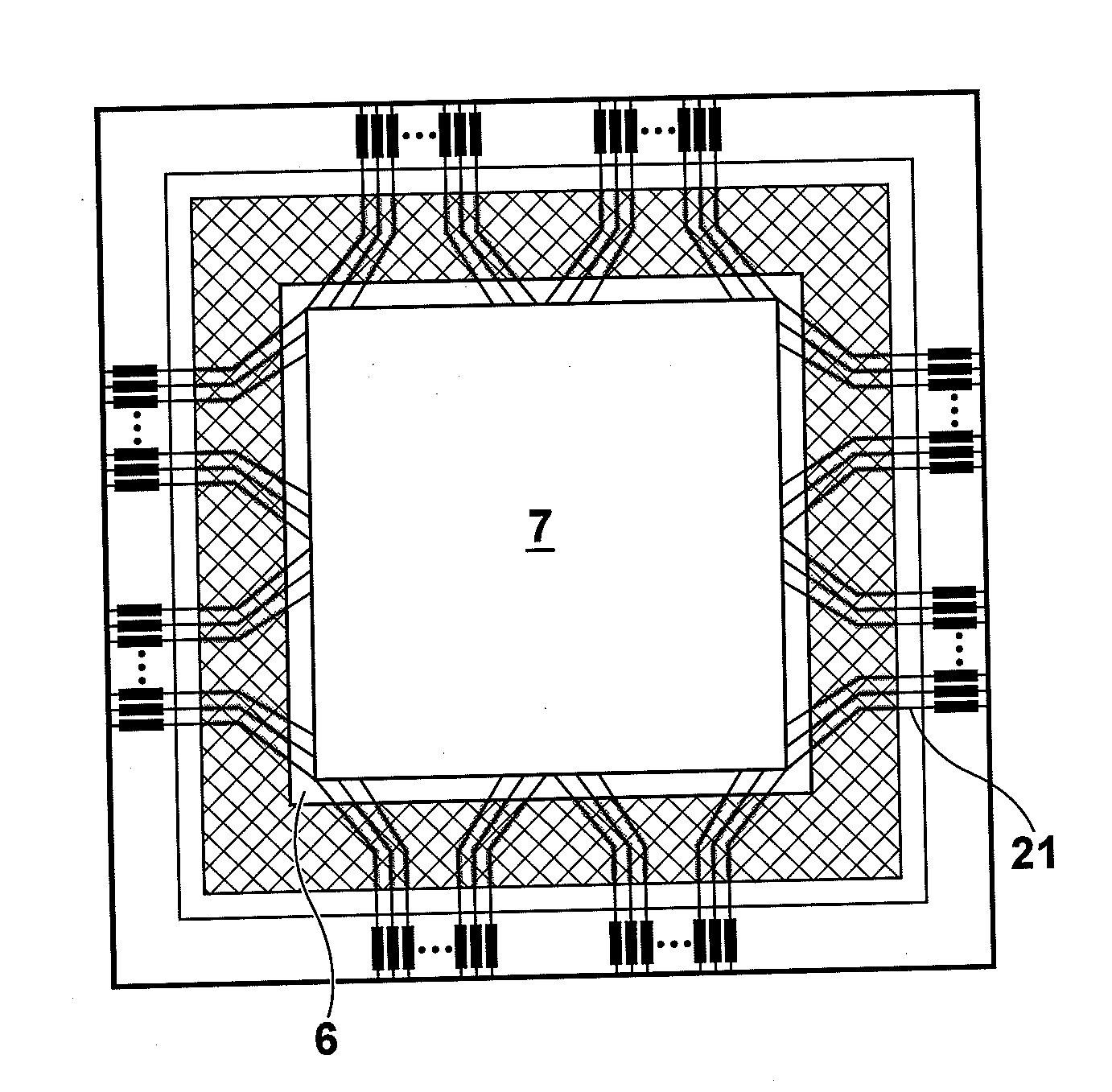Image detector
- Summary
- Abstract
- Description
- Claims
- Application Information
AI Technical Summary
Benefits of technology
Problems solved by technology
Method used
Image
Examples
first embodiment
[0041]Hereinafter, a radiation image detector to which is applied the image detector of the present invention will be described with reference to the accompanying drawings. FIG. 1 illustrates a schematic structure of the radiation image detector.
[0042]As illustrated in FIG. 1, the radiation image detector includes a TFT array substrate 10 having a substrate on which multitudes of TFT switches are disposed, a semiconductor layer 6 which generates charges according to an electromagnetic wave representing a radiation image irradiated thereon and is stacked on the TFT array substrate 10 such that the charges are read out by the TFT array substrate 10, an upper electrode 7 stacked on the semiconductor layer 6, an insulating bonding member 25 provided so as to cover a peripheral portion of the semiconductor layer 6 and an upper portion of the upper electrode 7 and to bond a protection substrate 18, to be described later, with the TFT array substrate 10, and the protection substrate 18 sta...
second embodiment
[0066]Also in the radiation image detector of the second embodiment, an inorganic insulating film 19 is provided at the entire bonding area of the insulating bonding member 25 to the TFT array substrate 10 in order to improve the adhesiveness between the insulating bonding member 25 and TFT array substrate 10. The inorganic insulating film 19 is provided so as to enclose the semiconductor layer 6. FIG. 6 is a top view illustrating the area where the inorganic insulating film 19 is provided.
[0067]The other structure of the radiation image detector of the second embodiment is identical to that of the radiation image detector of the first embodiment.
[0068]Next, a method of manufacturing the radiation image detector of the second embodiment will be described with reference to FIGS. 7A to 7F.
[0069]First, as illustrated in FIG. 7A, a TFT array substrate 10 is formed. Here, an interlayer insulating film 12 is formed through patterning by photolithography so as not to be formed in an area s...
third embodiment
[0084]Thus, in the radiation image detector of the third embodiment, the inorganic insulating film 19 is formed on the entire surface of the TFT array substrate 10, and the underlayer 20 is bonded to the TFT array substrate 10 through the inorganic insulating film 19, as illustrated in FIG. 8. By disposing the inorganic insulating film 19 in the manner as described above, the adhesiveness between the underlayer 20 and TFT array substrate 10 may be improved.
[0085]Also in the radiation image detector of the third embodiment, the inorganic insulating film 19 is provided at the entire bonding area of the insulating bonding member 25 to the TFT array substrate 10 in a manner to enclose the semiconductor layer 6 in order to improve the adhesiveness between the insulating bonding member 25 and TFT array substrate 10, as in the second embodiment. FIG. 9 is a top view illustrating the contact area of the inorganic insulating film 19 with the insulating bonding member 25.
[0086]As described ab...
PUM
 Login to View More
Login to View More Abstract
Description
Claims
Application Information
 Login to View More
Login to View More - R&D
- Intellectual Property
- Life Sciences
- Materials
- Tech Scout
- Unparalleled Data Quality
- Higher Quality Content
- 60% Fewer Hallucinations
Browse by: Latest US Patents, China's latest patents, Technical Efficacy Thesaurus, Application Domain, Technology Topic, Popular Technical Reports.
© 2025 PatSnap. All rights reserved.Legal|Privacy policy|Modern Slavery Act Transparency Statement|Sitemap|About US| Contact US: help@patsnap.com



